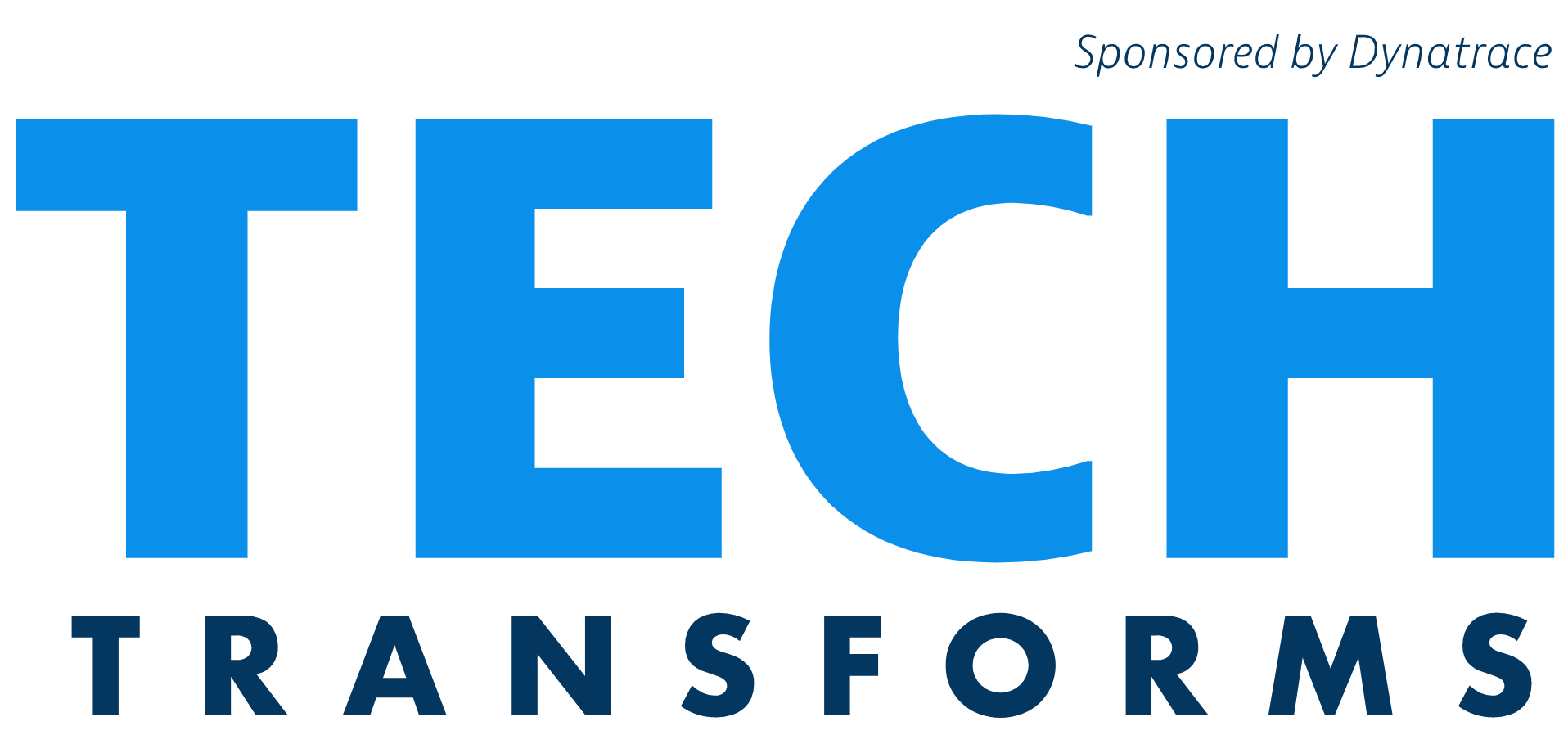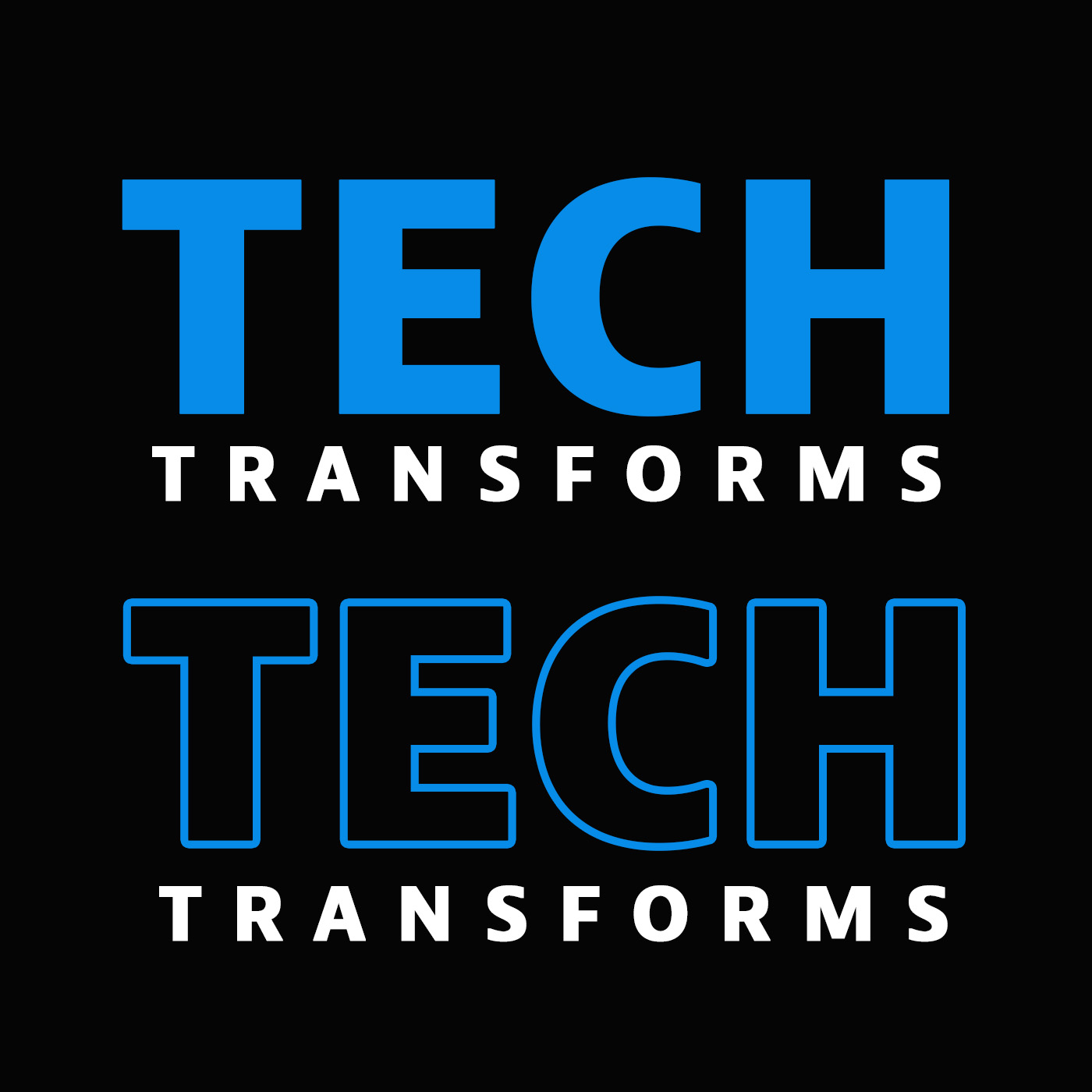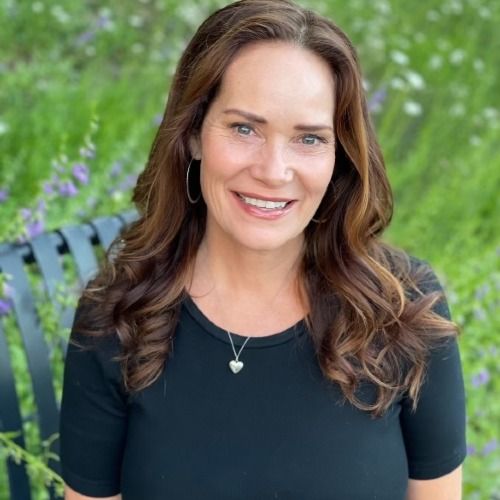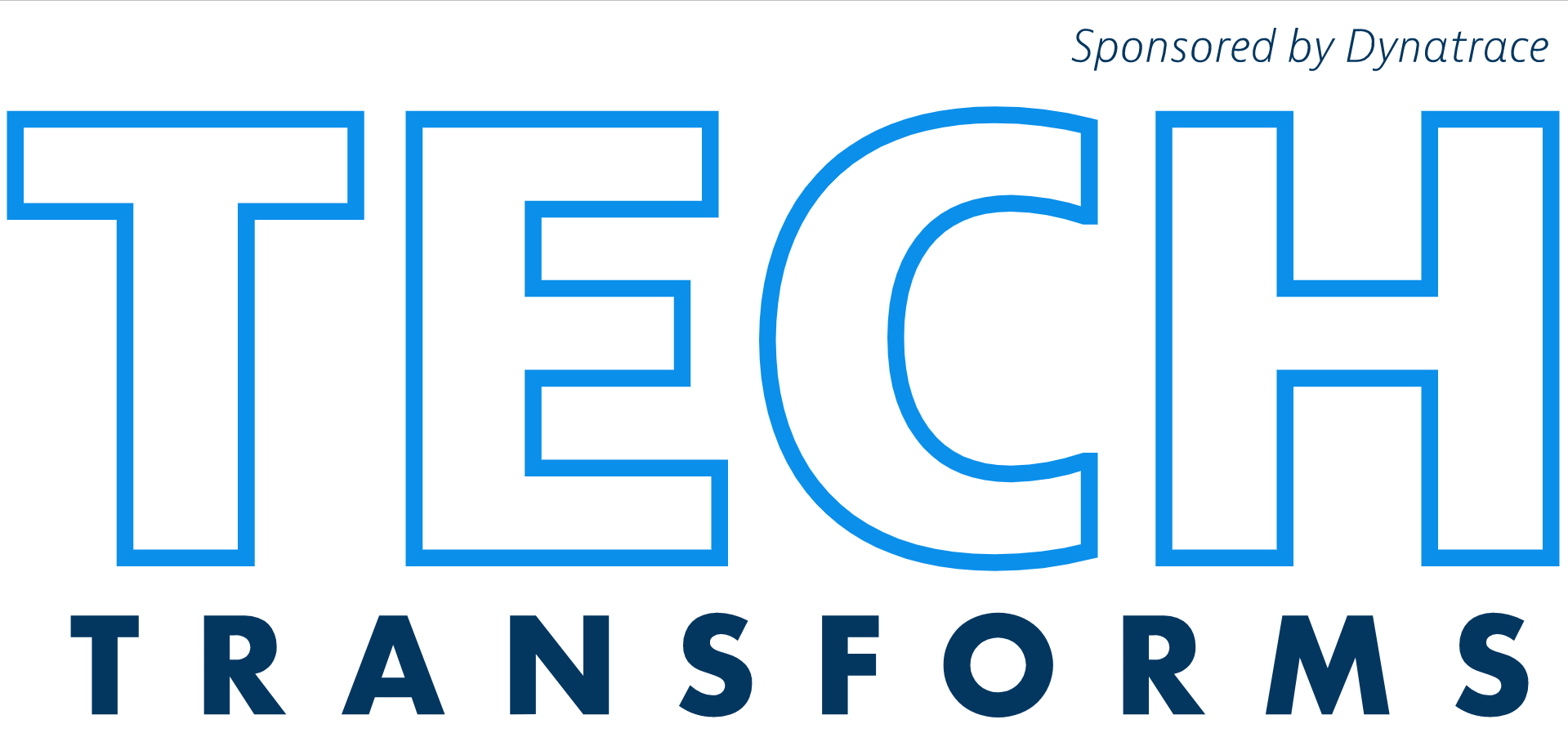Episode 13
Technology Lessons From the Smithsonian with Rayvn Manuel
Senior application developer at the National Museum of African American History and Culture, and Army veteran Rayvn Manuel explains why her job is the best job. From serving our country as a soldier, to serving our history through dynamic storytelling, Rayvn has a passion for development that shows in her work. Listen in as Carolyn and Mark learn about the innovative technology behind the newest addition to the Smithsonian.
Episode Table of Contents
- [01:46] The Purpose of Technology Is Huge
- [08:54] The Purpose of Technology Is Transformative Inclusion
- [17:49] They Take Cybersecurity and the Purpose of Technology Extremely
- [28:26] What I Wish the Purpose of Technology Can Do
Episode Links and Resources
The Purpose of Technology Is Huge
Carolyn: Today we have a guest who, as soon as I heard about this guest, I'm like, I want to talk to her. We've been trying for a little bit. Ravyn Manuel, welcome and thank you so much for being here.
Ravyn: Thank you for having me here. This is actually exciting.
Carolyn: Ravyn Manuel is Senior Application Developer at Smithsonian Institute National Museum of African-American History and Culture. The NMAAHC is the 19th museum of the Smithsonian that has been open since 2016. Since opening, it has collected over 36,000 artifacts and gained nearly 100,000 members. It was awarded the People's Voice Webby Award in 2017.
Mark: Can you describe your role in the context of a modern museum experience? What that means and what your role is at the museum?
Carolyn: Why do we even need an application developer? Having been through it, I have to look back and I'm like, oh yes, the technology was huge. I didn't notice it at the time. Looking back on it, the technology is what really bathed me and immersed me a lot in the experience, especially as I moved up.
Ravyn: That is awesome. It was so integrated, that you felt it was just part of that experience from what I was hired for. Our museum is not just the only one that has application developers. There are other museums because every museum and gallery has a website. We have to have somebody on staff to actually maintain the website. I don't work on the website, I actually have three hats.
The Whole Purpose of Smithsonian
Ravyn: One, when there are smaller exhibits and they are interactive. Those things that you touch, which are going to be contactless, moving forward. Those are the things that I develop. Or I will work with a designer like the UI, UX designer then develop these interactives. These will bring home the message that the education department would like people to take away from an exhibit.
The whole purpose of the Smithsonian itself is for education. When we make an exhibit, it isn't just to have you have a feeling. It's also for you to have an opinion for you to be immersed in that history. To walk away with some knowledge that you didn't know before, or to change your opinion about what you felt before.
My role as an application developer is the R and D person. I look at spaces in our museum and I go, how can we get the message across better here? What would help make this, not only a fun engaging process but also help people learn? My particular interest is in accessibility. I’m always looking for ways to make our interactions or the museum visit accessible for people who may not be able to experience it with their eyes.
For people who may not be able to hear the audio that's going on or have cognitive differences and how they actually interpret. That's what I do. I'll make a prototype, show it to my supervisor and say, what do you think about this? Most of the time, what I feel isn't going to go there. But it gives me a chance to say, “here's how we can use technology to actually assist people in their experience and to tell the story in an engaging way.”
Interactive Exhibits
Ravyn: A lot of our exhibits are interactive, some of them are really huge. So we hire out for that. We have contractors for that. But if it's small, if there's a game like World War II which was the last one, I think I made. There was at the end, once you got through that whole exhibit, you should have learned about the nine luminaries that were highlighted in the exhibit. When you get to the end, you have a quiz.
What the quiz does is ask you, do you see yourself as a writer? At the end, you actually came up with a luminary that should have mimicked what you felt. So, that was an interactive that I actually implemented. That's actually my role, the best job ever. There is nobody who has a better job than me.
Mark: What options are there for virtual visitors that can't get to DC, that you want to have some sort of experience of the museum? Do you work on that stuff?
Ravyn: I didn't. There is a big project and I think it's going to be launching in a couple of months. It is a Smithsonian vision. It's not just for our unit. It is the Smithsonian vision of making everything digital so that it can be experienced on the web. We have a virtual museum experience that's going to be launched and it is phenomenal. What it will do for you is it will have you pick an object. Pick an experience and then connect it with another experience or another object that you would not have actually thought about.
An Open Access to the Purpose of Technology
Ravyn: Most of the museums have some type of digital, like we have open access. I don't know if you are aware of that open access. The developers or anybody can actually go online and use the images in this space. We have the Smithsonian. If you go to the Smithsonian website, si.edu, you can just search for open access. You'll see that you have access to any number of objects from all the museums.
Carolyn: Cool, I didn't know that either.
Ravyn: The Smithsonian High was something that was started at the Hirshhorn Gallery and you use your mobile device. When you go into the units, the museums, or galleries that have this implemented, you'll take your mobile device and put it on the QR code. Then you'll get more information about that object, or about a tour, or a way of finding things. That's actually something that we have.
Then there’s the other websites, our website is unique, but it's pretty put together like the other websites. It is where we highlight our objects. You can search for our objects, you can see what the exhibits are about. We have a mobile app that will help you plan your visit. I'm actually working on a mobile application with the National Center for Atmospheric Research.
Believe it or not, we are coming up with a mobile device for accessibility. It will give people who are low vision or blind, a way to navigate not just through the facility, but also to have a similar experience and learn about those particular objects. They can go to an exhibit and then point their phone onto something. They’ll be able to hear something about that object. That's actually next year's thing.
The Purpose of Technology Is Transformative Inclusion
Carolyn: That's transformative inclusion. That's the way we do technology.
Ravyn: Yes, exactly. Not just for technology’s sake, it has to have a purpose.
Mark: Do you guys have any plans or vision to do stuff like virtual reality?
Ravyn: That's actually me, that's my thing. I want to add AR like the app that we're using. I am making this with my co-developer, Neon, using AR, Artificial Reality. I'm looking into how we can use AI or machine learning or VR into these experiences. One of the places, the contemplate of court actually is where I've looked. I thought this was a great space. But if you don't know the people who have the writings on the wall, then you're missing it.
Mark: What's the difference between VR and AR? That's a good term.
Ravyn: Artificial reality is when you take reality as it is and then you expand it. You have to have something there in order to expand it. Virtual reality is you make something out of nothing.
Carolyn: I read a couple of articles about it in the last Signal magazine that DoD is doing a lot with it. It is like simulating reality. What you're doing is awesome though.
Ravyn: I worked for the State Department way back and for the Diplomatic Security Service. That is what we did as programmers. We tried to help with the training by using VR and AR, which was really cool.
Carolyn: There were certain rooms, like when I got to the ancestry room, I don't know what it's really called. I did obviously notice the technology in there.
Plan for Security Majors
Carolyn: One of the reasons that I didn't is because it was seamless. There was no glitch. Like how do you keep it running all the time? How do you plan for security majors? I’ve noticed that one of the descriptors in your job includes DevSecOps. Another term I would not put in a Smithsonian museum.
Ravyn: I personally do not keep them running because I don't actually work in the museum. I work at the capital gallery. We have an AV crew, we also have facilities. People who go to the museum every day and make sure everything works every day, that is the one thing that we do. We make sure that the visitor experience isn't hampered by anything that doesn't work.
Carolyn: Do they manually walk through and make sure everything works? Do you monitor from afar as well?
Ravyn: They do. They have a way to monitor, especially if it's a web-based thing. We have an internal network. The monitoring system is tapped into the internal network so they can see what's happening. There are times when they have to be down, maybe for maintenance. But there are people that go every morning that the museum is open to make sure everything is open, and it is correct.
When I got to the museum, I worked for AOL. I was a developer there, but I also did systems and system admin stuff. On the backend of things, we have our servers, we have these things that have to happen. Even though we don't produce a lot of software, we do produce applications. I told my supervisor we could be a little bit more performant in the way we get things from the developer to the floor.
How DevSecOps Got Into the Museum
Ravyn: That is how DevSecOps actually got into our museum. I have counterparts, like in SAM, in the American Art Museum. Their title is DevSecOps engineer. They're application developers as well, but they do take care of their systems. Our IT infrastructure, the enterprise, IT, which is OCIO, the Office of the Chief Information Officer, they're investigating how to implement DevOps into this Smithsonian. Because they manage most of the web applications that are out there.
Mark: Including you guys. It all comes together to the greater Smithsonian team.
Ravyn: Sort of. We're autonomous, most of the units are autonomous. We can do whatever we want to the chagrin of both CIOs. But we do try to be good citizens and work with them. They do have a server, a server farm I guess, that we have some things on. We do have this big IT presence that you never would know that the Smithsonian would have. You wouldn't think that's part of it, but it is. It's cool.
Mark: So, how did you manage all this through the pandemic?
Ravyn: We had to close for a bit. We have the bigger Smithsonian which we call the castle that is like the mothership. The units mimic that, so we have a new normal team. It was one of the teams that we had. We did this castle to figure out how to go from where we were to the new normal, whatever the new normal is going to be.
Also, we had another team, a COVID team that was specifically to help with the health thing. If you needed assistance with COVID and to be able to pipe what was happening down at the unit level to go to the Smithsonian. We had those two teams.
The Phase Approach
Ravyn: The COVID team is responsible for how, when we open in the phase approach. How we keep our visitors safe, how we ensure that we're following CDC guidelines and our own stricter guidelines. Making sure that everybody stayed healthy, including staff, visitors, and security.
The new normal team is the team that took all of the staff input about how we were feeling. What were our concerns, what were we willing to do and what we were not willing to do? And what were we doing because of COVID that actually seemed like best practice?
One of the things that came out of that, from my understanding, is, we have so many options for telework. It's ridiculous how people can pretty much make a buffet out of how they would like to telework. People like myself where I don't really need to be at the museum. We have at this point, we are not going into our workspaces or into the museum.
I've been teleworking for almost two years now. I haven't been anyway, but we can go. But if we don't have a reason to go, then don't go. What we're trying to do is keep everybody safe. That's really how those things happened.
You asked me about security. Security has always been on property. Even when the museum was closed, security has always been there. The level of security across Smithsonian never diminished. It's always been like we're in a very visual place and there's some controversy sometimes with what we display. Security has never actually been diminished.
Mark: That's like physical security, but what about cyber security?
Carolyn: What about your applications?
Taking Cybersecurity and the Purpose of Technology to the Nth Degree
Ravyn: For our applications, the ones that are in the museum, when I make the ones that I've been implementing, I use the internal network. There is no access outside really because it's an internal network. The network itself is OCIO. They are responsible for the whole network and because they take cybersecurity extremely, to the nth degree, which is to my chagrin as a developer. That means, I have to be careful about what I'm doing, about libraries that I'm using, about open source stuff.
There's got to be a balance, but it's really a tug of war between I need to use this thing. Security is like, if you use that thing, it's going to open us up for an attack. We really don't like to have our websites down. It's not good because there are people who don't get to come to the museum who want to experience the museum. The only way they can touch us is through the websites.
Carolyn: I wanted to ask you about just your recommendations for navigating the museum. You touched on this application. I'm not sure if it's ready yet. You can plan your trip because I wish I would've done that. I feel like I missed so much, I could have spent a month in that museum.
Ravyn: It's our mobile device and it's going through some upgrades. I will get back to you to let you know when this feature will be available. But what the features are supposed to do is, like you say that you only have 5 hours. You want to spend two and a half hours in that museum.
What the App Is Meant to Do
Ravyn: Then in our museum, two and a half, like NMAI. You're like a baseball aficionado. So you say, give me some suggestions of where I can go in the museum if I have this particular like. Or if I only have these particular things, or I only have this particular amount of time. That's what the app is meant to do.
I believe that that feature might be coming. It's being worked on. I will definitely email you and let you know if it's available, then you do it on your mobile device. It's another QR code thing that you do and then it'll come up.
Mark: Do you have an app that someone can download onto their phone and then they navigate through the app?
Ravyn: That app is that one you can download.
Carolyn: This'll be a new feature to the app where you can actually plan your time. That's brilliant.
Ravyn: Yes.
Carolyn: I have a love-hate relationship with museums in general, because I want to see it all. I like the idea of going exhausted before I'm even there because I know I can't see it all. Let’s jump to our tech talk questions. These are just fun questions with rapid answers. I’m always looking to build my reading and my television viewing list. So I want to know what you're reading, listening to, and watching that inspires you or that you just do to chill.
Ravyn: I live in the mountains and I have very poor internet connection, so I don't have TV. I don't even have a signal. And I don't really like TV. I never did when I was a kid. But I read a lot and I listen to audiobooks a lot.
The Whole Journey of Building the Purpose of Technology
Ravyn: One of the books I just finished is a Fool's Errand by Lonnie Bunch, our secretary who used to be our director. He wrote the book and it’s about that whole journey of building the museum. It was great just to hear his experience about how to get that in there. I'm also a geek. I won't talk about the tech manuals I'm reading because I read a lot of tech manuals.
But the museum, I grew up in the Bronx and I grew up going to Catholic school. It kind of ditched history for placement for religion. I didn't really know history very well or geography. And I thought everything was New York. Like Chicago was part of New York when I was growing up. I just thought that was how it was.
I'm trying to make myself learn more. But the reconstruction exhibit and the records that you were able to search, they had me thinking about my history, because I didn't know it. And so I started reading the constitution and reading books about American history. I'm really not a person who likes history because I don't do well with dates, but I'm really great with numbers.
I think about why reconstruction failed because we're still in a place where we have racism. Like why do we still have this? Where did that come from? Those are the types of books I read when I'm in a contemplative mood. It's about American history, the founding fathers, about England and the English system. For fun, I read anything that's fantasy, sci-fi, I've got this thing about murder mysteries that I like.
The Broken Earth
Carolyn: What's your favorite sci-fi? Have you read the Broken Earth series?
Ravyn: No. What series is it?
Carolyn: It's called the Broken Earth series. I'm going to send you the link and it is one that I started. It's a trilogy. She won the Hugo award, three years in a row, and that's never happened before. It's sci-fi fantasy, but she approaches things on this cosmic level. So rather than looking at time, like in years, it's billions of years. It blew my mind and it's fantastic. But I have another one for you.
Ravyn: Have you heard of God, Human, Animal, Machine by Meghan O'Gieblyn?
Carolyn:...




